Affiliate links on Android Authority may earn us a commission. Learn more.
Samsung Galaxy S8 and S8 Plus officially announced: what you need to know
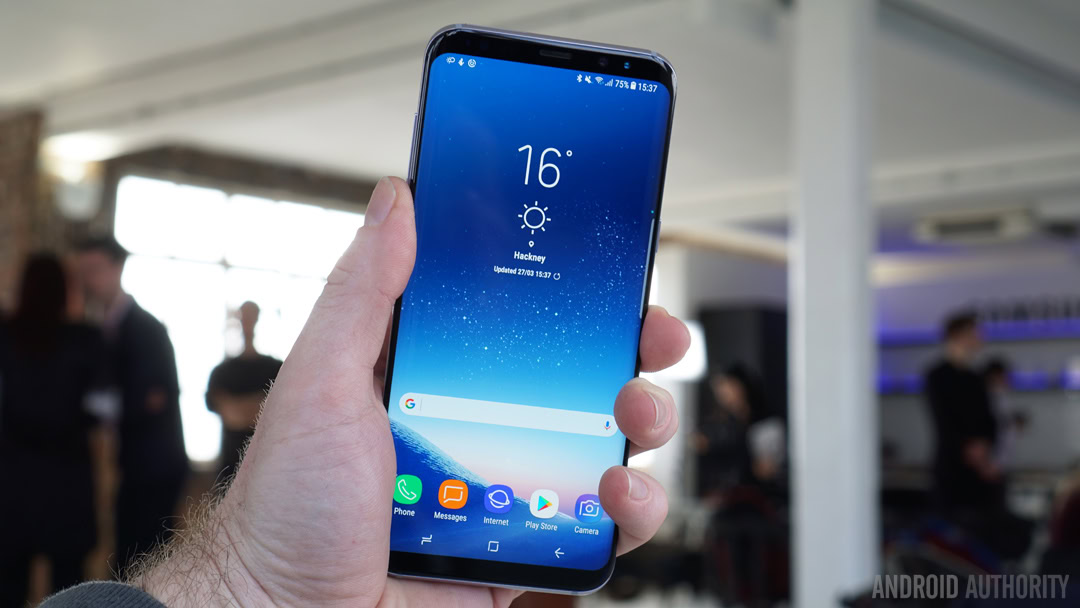
Over the past few years, Samsung has put a much larger focus on smartphone design and software. Thinking back to the Galaxy S6 and S6 Edge, both of Samsung’s 2015 flagships offered up a premium design and impressive feature set over the ill-conceived Galaxy S5.
Then in 2016, things changed… a lot. Not only did Samsung improve even more on the design and software fronts, both the Galaxy S7 and S7 Edge stayed at the top of our best Android phones list for the entirety of the year. But towards the end of the year, something went wrong. Samsung released the Galaxy Note 7 to much fanfare, though the celebration was incredibly short lived. The company was forced to recall all of its Note 7 devices due to overheating batteries, resulting in what’s widely considered to be the most botched smartphone launch of all time.
Now we’re getting our first look at what Samsung has to offer in 2017. With a renewed focus on quality and a new take on smartphone design, the Galaxy S8 and S8 Plus are finally here, and we’ve got all the details. Here’s everything you need to know about the Samsung Galaxy S8 and S8 Plus!
Additional Samsung Galaxy S8 coverage:
- Samsung Galaxy S8 and S8 Plus hands on
- Samsung Galaxy S8 pricing and availability
- Galaxy S8 vs S8 plus: which one is right for you?
- Samsung Galaxy S8 color comparison
- Samsung Galaxy S8 vs the competition
- Samsung Galaxy S8 vs LG G6
- Everything you need to know about Samsung DeX
- Hands on with the new 4K Gear 360
- Hands on with the new Gear VR with motion controller
Samsung Galaxy S8 and S8 Plus design
Ever since the Galaxy S6 and S6 Edge, Samsung has made it a point to offer consumers two different variants of its flagship smartphones – one with a curved display, one without. Last year’s S7/S7 Edge duo was no different, but that’s changing this year.
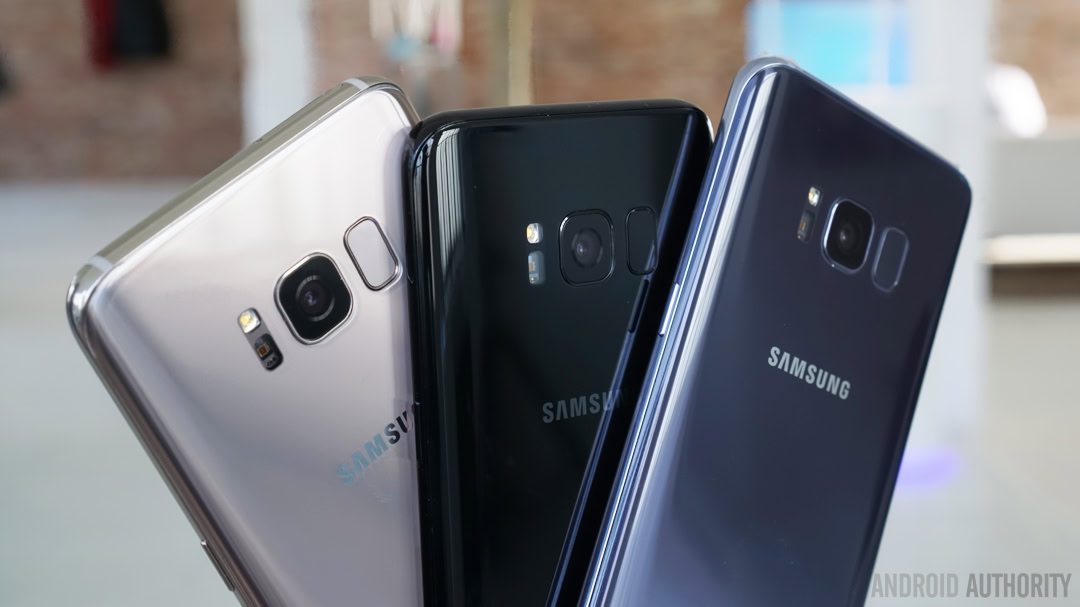
Both the Galaxy S8 and S8 Plus feature curved edges on the left and right sides of the displays. These curves are much more subdued compared to the curvature found on the S7 Edge, and are also complemented by curves on the back of the handset. Samsung says both handsets provide a “natural fit in one hand”, and we’d have to agree.
The S8 and S8 Plus are the first Samsung phones with on-screen navigation buttons
Due to the curved displays, there’s barely any amount of noticeable bezel on the left and right sides of the device. You’ll also notice that the top and bottom bezels have been shrunk down quite a bit this time around, leading to what’s perhaps the most controversial design decision Samsung made with these smartphones: after all these years, Samsung has moved away from capacitive buttons and instead included software navigation buttons on the S8 and S8 Plus.
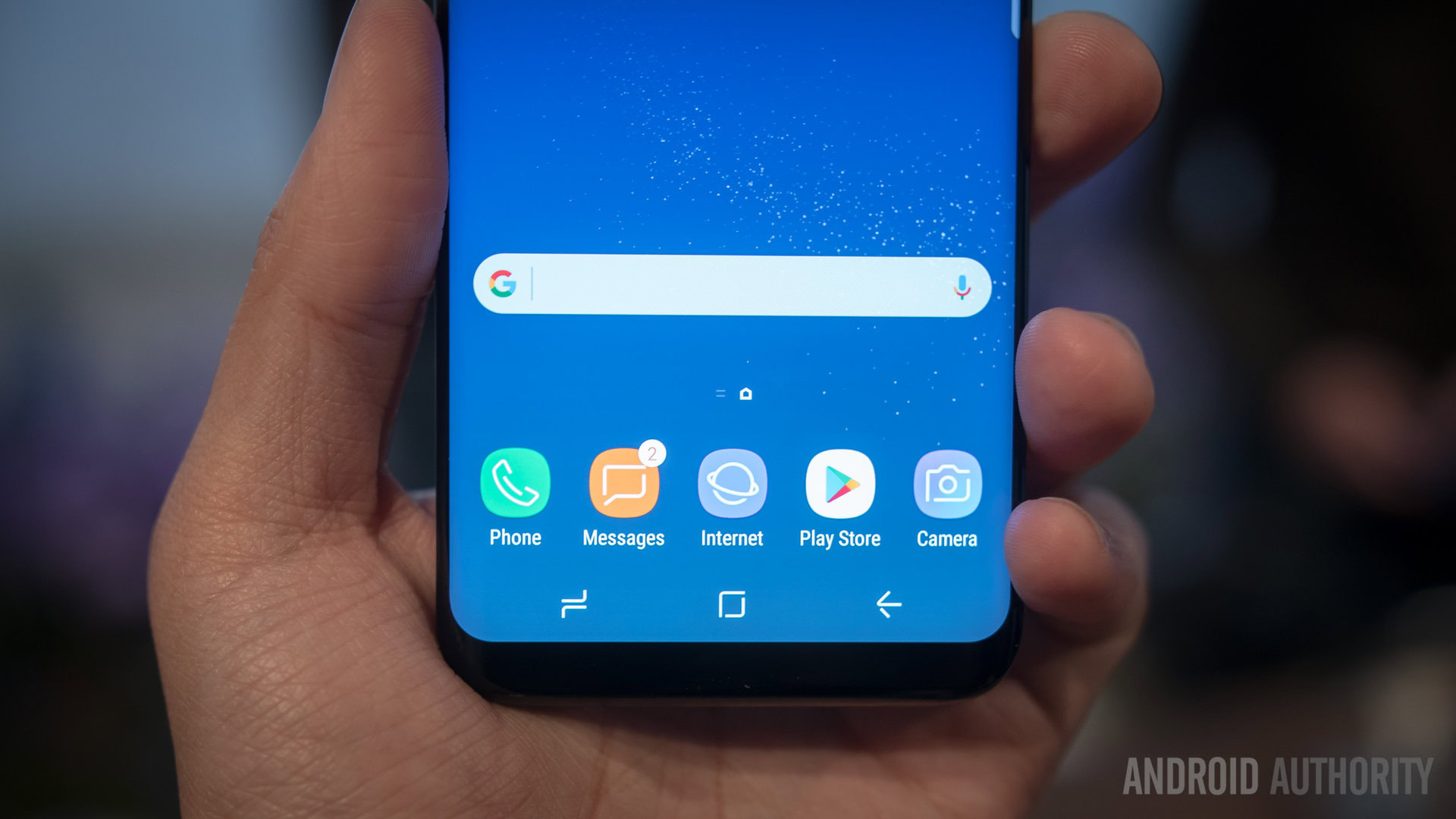
On the bottom of the display, you’ll find on-screen back and recent apps keys, which flank the home button that sits underneath the display. What exactly does that mean? Basically, when the screen is on, these on-screen navigation buttons will work just like they do on any other Android phone; they appear when you need them, and disappear when you’re watching videos or playing games. But when the screen is off, the home button will reappear, giving users an easy way to wake the phone’s screen. In fact, even if you don’t see a home button where the home button should be, you can press down hard on that spot to go back to your home screen.
Samsung says the iris scanner is much more accurate than before
Above the display, you’ll find a speaker for phone calls, a front-facing camera sensor, and an iris scanner. The iris scanner first made its debut on the Galaxy Note 7, and has been vastly improved this time around. Samsung says it’s much more accurate than before.
On the bottom of the device, the S8 and S8 Plus feature – wait for it – a 3.5 mm headphone jack, a USB Type-C port, a microphone, as well as a single bottom-firing speaker grill. The right side of the phone has a power button, while the left side has a volume rocker and a physical Bixby key (more on that later).

Around back, the S8 and S8 Plus look slightly different from last year’s flagships. They still feature a single camera sensor in the middle towards the top of the device, with the heart rate sensor sitting to the left. To the right, however, you’ll find the fingerprint sensor. It’s certainly an odd location for a fingerprint sensor, and one that will definitely take some getting used to.
Most smartphone manufacturers that implement rear-facing fingerprint sensors tend to put them in the middle, below the camera sensors. This is because your finger normally rests in the center of the phone, not towards the top next to the camera.
The decision to place the fingerprint sensor near the camera was... odd
In terms of color options, the S8 and S8 Plus will come in Midnight Black, Orchid Gray, and Arctic Silver. Samsung also confirmed a Coral Blue color for the handsets, but we’re not sure which regions it’s going to or when. Whichever color you end up choosing, though, all Galaxy S8 and S8 Plus models will feature a unified front with a black bezel.
Samsung Galaxy S8 and S8 Plus specifications, features, and software
| Samsung Galaxy S8 | Samsung Galaxy S8+ | |
|---|---|---|
Display | Samsung Galaxy S8 5.8-inch Quad HD+ Super AMOLED 2960 x 1440 resolution 570 ppi 18.5:9 aspect ratio | Samsung Galaxy S8+ 6.2-inch Quad HD+ Super AMOLED 2960 x 1440 resolution 529 ppi 18.5:9 aspect ratio |
Processor | Samsung Galaxy S8 U.S.: 64-bit octa-core (2.35GHz Quad + 1.9GHz Quad) Qualcomm Snapdragon 835, 10 nm process Global: 64-bit octa-core (2.3GHz Quad + 1.7GHz Quad) Samsung Exynos 8895, 10 nm process | Samsung Galaxy S8+ U.S.: 64-bit octa-core (2.35GHz Quad + 1.9GHz Quad) Qualcomm Snapdragon 835, 10 nm process Global: 64-bit octa-core (2.3GHz Quad + 1.7GHz Quad) Samsung Exynos 8895, 10 nm process |
RAM | Samsung Galaxy S8 4 GB LPDDR4 | Samsung Galaxy S8+ 4 GB LPDDR4 |
Storage | Samsung Galaxy S8 64 GB USF 2.1 | Samsung Galaxy S8+ 64 GB USF 2.1 |
MicroSD | Samsung Galaxy S8 Yes, up to 256 GB | Samsung Galaxy S8+ Yes, up to 256 GB |
Cameras | Samsung Galaxy S8 Rear: 12 MP Dual Pixel sensor, f/1.7 aperture, OIS Front: 8 MP sensor, f/1.7 aperture | Samsung Galaxy S8+ Rear: 12 MP Dual Pixel sensor, f/1.7 aperture, OIS Front: 8 MP sensor, f/1.7 aperture |
Battery | Samsung Galaxy S8 3,000 mAh Fast charging | Samsung Galaxy S8+ 3,500 mAh Fast charging |
Wireless charging | Samsung Galaxy S8 Yes, Qi and PMA | Samsung Galaxy S8+ Yes, Qi and PMA |
Water resistance | Samsung Galaxy S8 IP68 dust and water resistance | Samsung Galaxy S8+ IP68 dust and water resistance |
Connectivity | Samsung Galaxy S8 Wi-Fi 802.11 a/b/g/n/ac (2.4/5 GHz), VHT80 MU-MIMO,1024QAM Bluetooth 5.0 (LE up to 2 Mbps) ANT+ USB Type-C 3.5 mm headphone jack NFC Location (GPS, Galileo, Glonass, BeiDou) | Samsung Galaxy S8+ Wi-Fi 802.11 a/b/g/n/ac (2.4/5 GHz), VHT80 MU-MIMO,1024QAM Bluetooth 5.0 (LE up to 2 Mbps) ANT+ USB Type-C 3.5 mm headphone jack NFC Location (GPS, Galileo, Glonass, BeiDou) |
SIM | Samsung Galaxy S8 Nano SIM | Samsung Galaxy S8+ Nano SIM |
Software | Samsung Galaxy S8 Android 7.0 Nougat | Samsung Galaxy S8+ Android 7.0 Nougat |
Dimensions and weight | Samsung Galaxy S8 148.9 x 68.1 x 8mm 155 g | Samsung Galaxy S8+ 159.5 x 73.4 x 8.1 mm 173 g |
As expected, Samsung packed in just about every high-end specification it could with the Galaxy S8 and S8 Plus. Under the hood, both devices sport 4 GB of LPDDR4 RAM, 64 GB of on-board storage and microSD card support for up to 256 GB of extra storage.
As is the case with most other phones in the Galaxy S lineup, Samsung is using the latest Qualcomm processor in the U.S. model, while the global variant will get the latest high-end Exynos CPU. Specifically, the U.S. model will come with an octa-core Snapdragon 835 processor, and the global variant will sport the Samsung Exynos 8895.
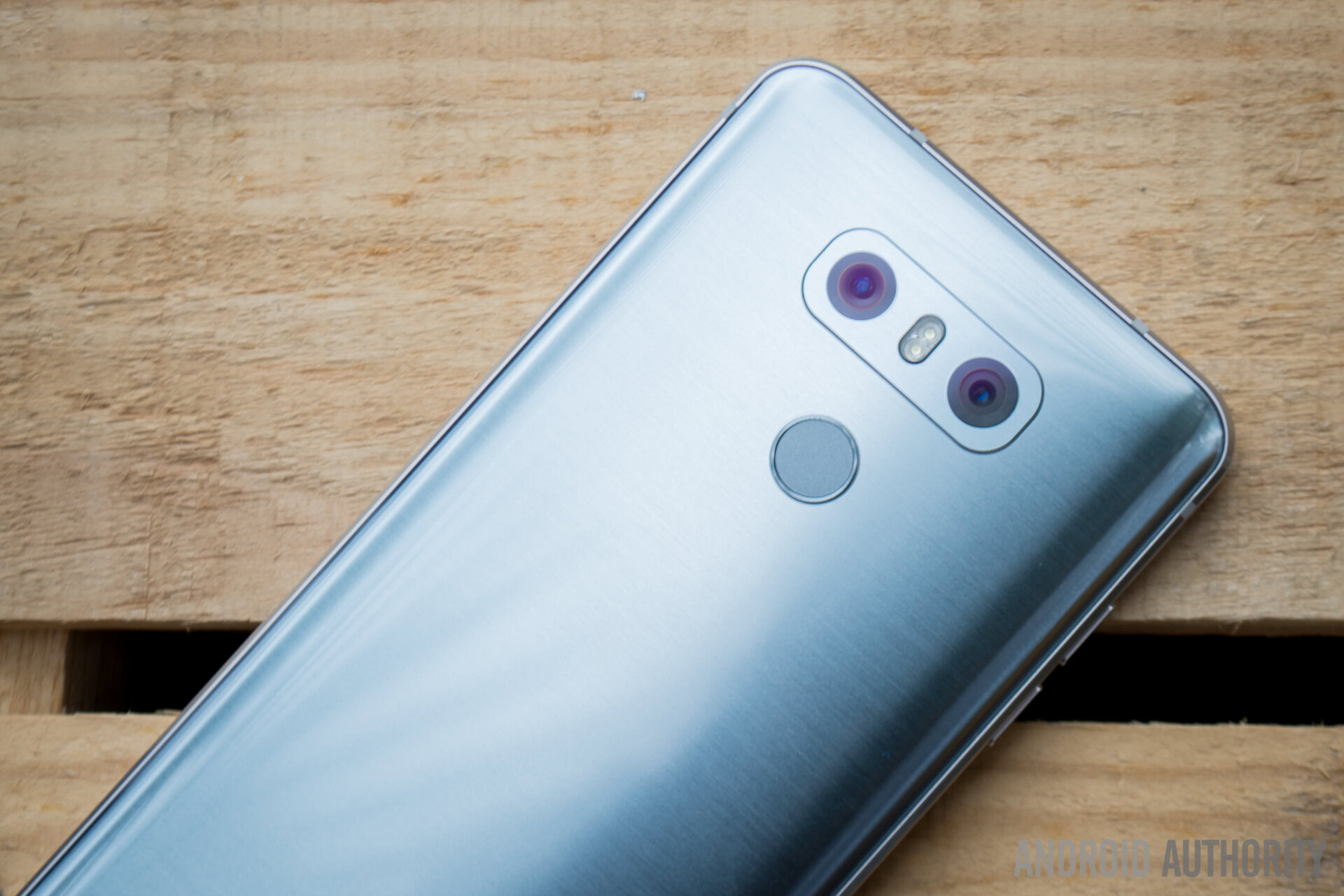
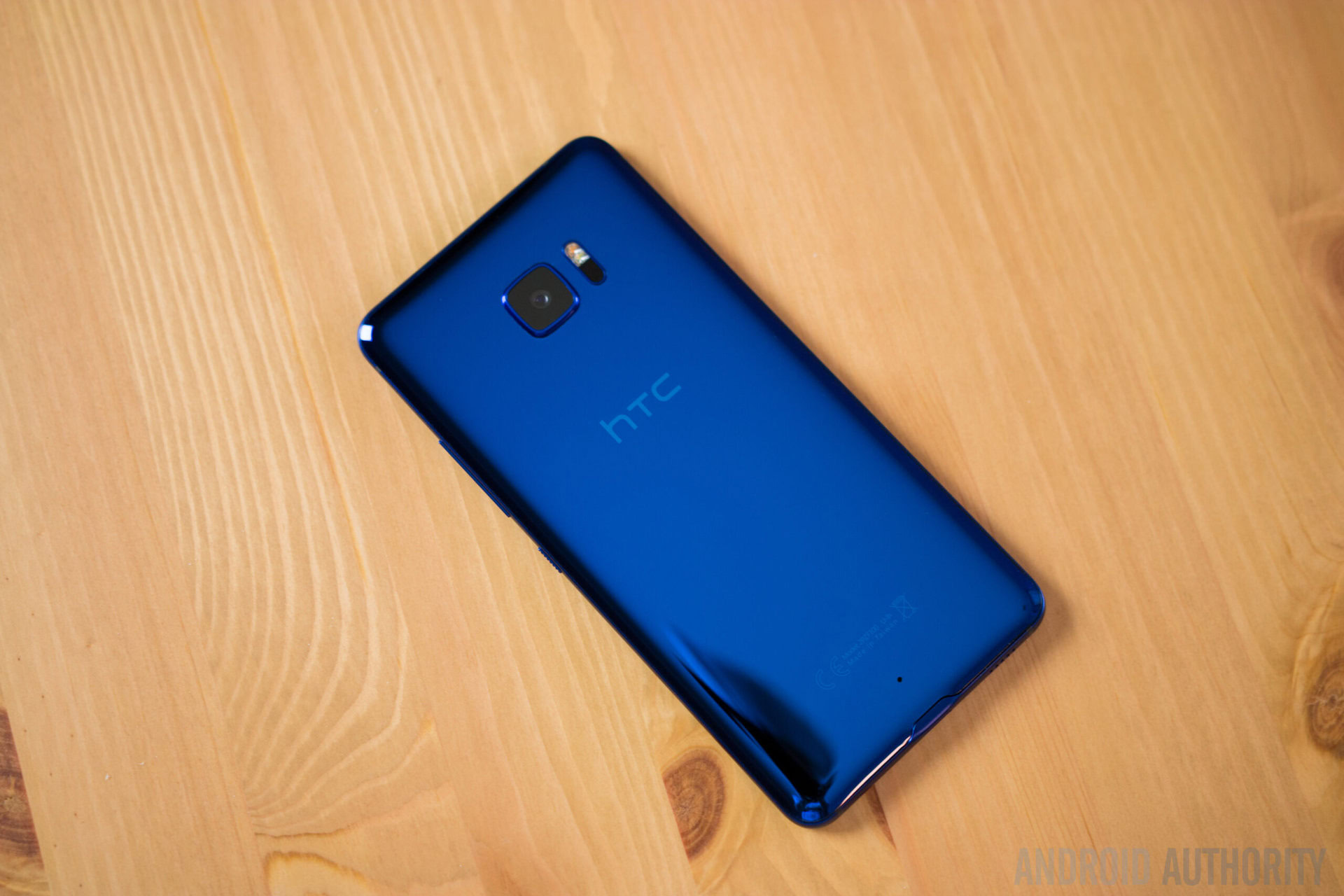
We’ve already talked about the curvature of the displays, but we haven’t gone into specifics yet. The Galaxy S8 features a 5.8-inch Quad HD+ Super AMOLED display, while the Galaxy S8 Plus sports a larger 6.2-inch screen. Both displays have a resolution of 2960 x 1440, resulting in a pixel density of 570 and 529 ppi, respectively.
Like the LG G6, both of the displays on these devices have a much different aspect ratio compared to most other smartphones on the market. The S8 and S8 Plus sport an 18.5:9 aspect ratio, while the G6’s screen comes with an 18:9 and most other phones have a 16:9 ratio. Why is the screen so different this time around?
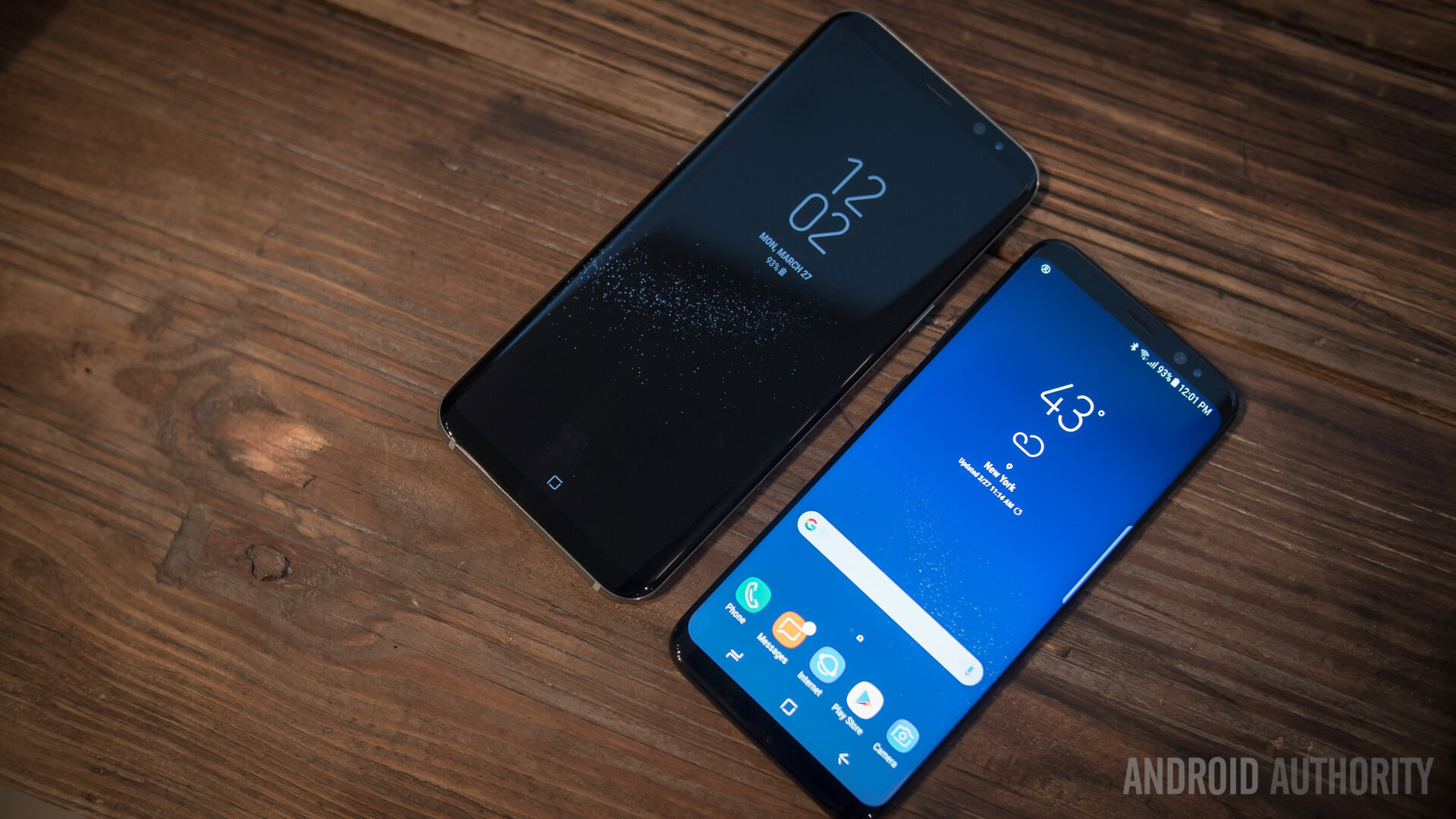
For starters, this 18.5:9 aspect ratio means the phones’ screens measure slightly over double the width of the screen. This means Samsung was able to pack a larger screen into a smaller form factor without making these phones completely unwieldy in the hand. Try to imagine your phone, with its 16:9 aspect ratio, measuring at a 6.2-inch diagonal. Needless to say, it’d be pretty difficult to hold in one hand.
Samsung has also worked with the UHD Alliance on the Galaxy S8 and S8 Plus to ensure these are the world’s first “mobile HDR” smartphones.
To power these top-of-the-line displays, the Galaxy S8 comes with a non-removable 3,000 mAh battery, while the S8 Plus has a 3,500 mAh cell. Compared to other flagship smartphones on the market, these aren’t incredibly high battery capacities, but they’re not low either. For reference, the S7 had a 3,000 mAh battery, while the S7 Edge’s came in at 3,600 mAh.
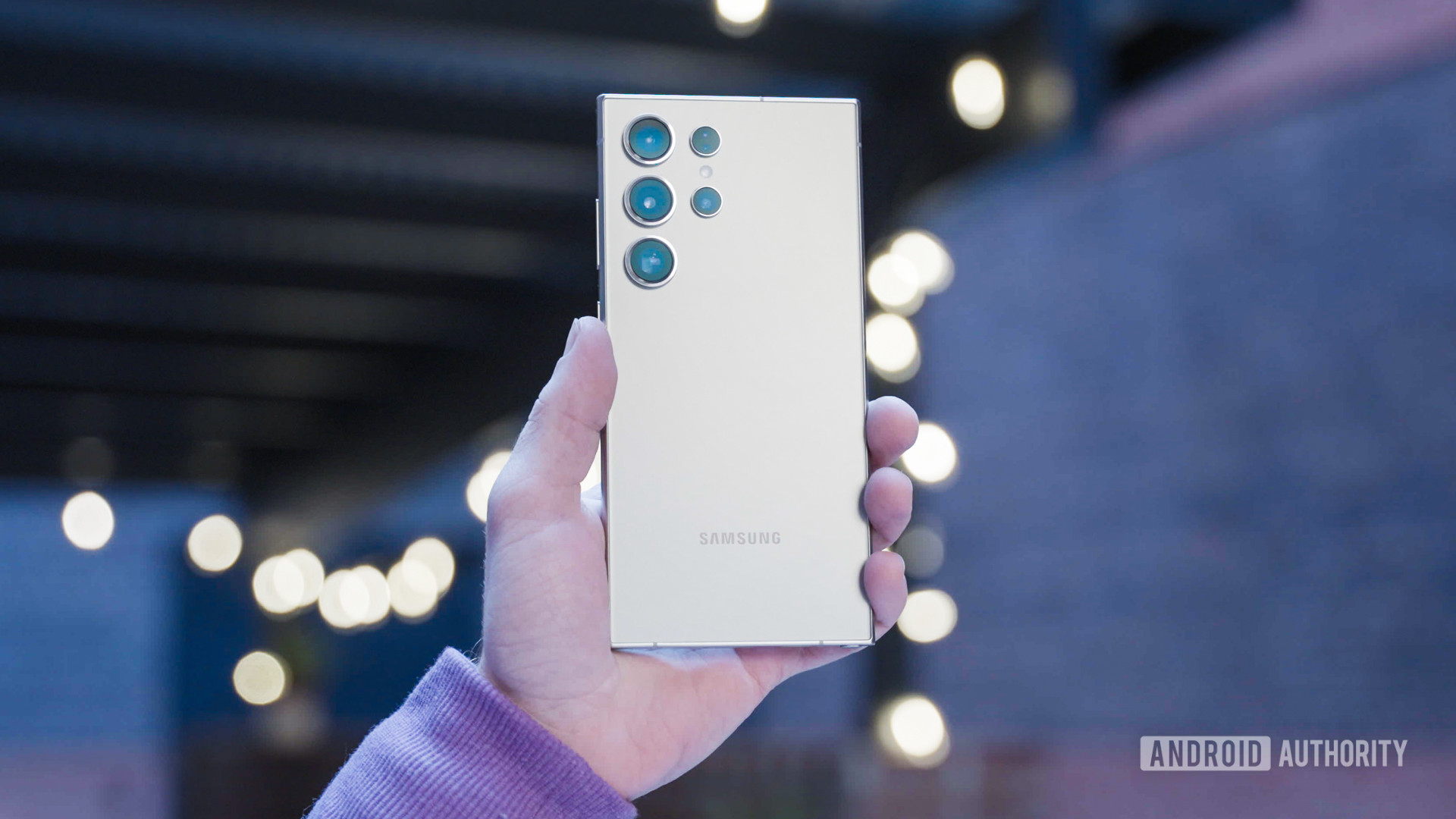
When you do have to recharge, you’ll be happy to hear that, yet again, Samsung included fast charging, Qi and PMA wireless charging support with these phones. While not an incredibly popular feature anymore, Samsung continues to include wireless charging in its devices at a time when most other OEMs aren’t.
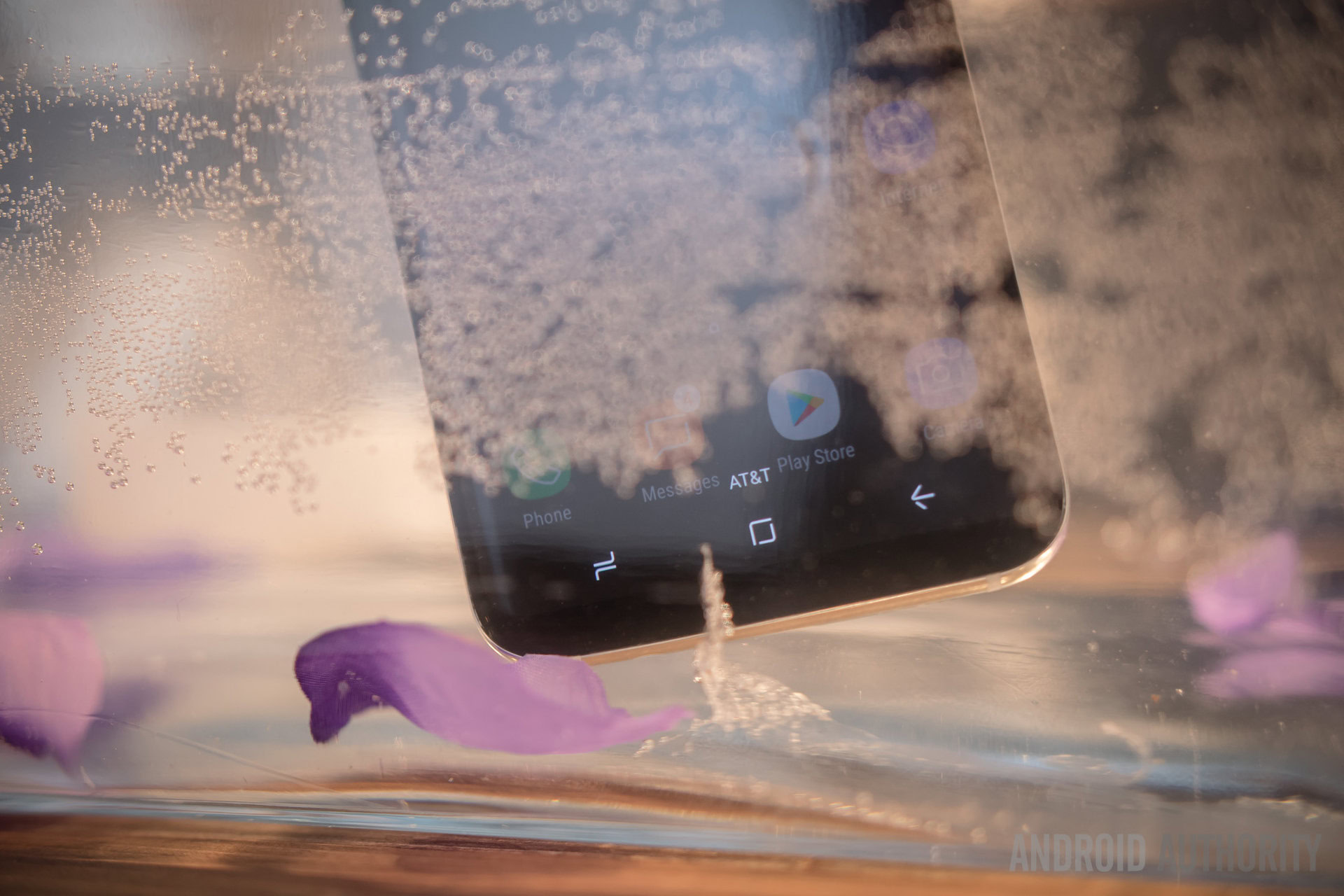
Speaking of additional features, both the S8 and S8 Plus sport an IP68 rating for dust and water resistance. This means both phones will be able to withstand being submerged in up to 1.5 meters of water for up to 30 minutes.
The S8 and S8 Plus are also seeing a pretty decent upgrade in the camera department
The S8 and S8 Plus are also seeing a pretty decent upgrade in the camera department. They feature 12 MP Dual Pixel main sensors with an f/1.7 aperture, while the front-facing sensors are seeing an upgrade to 8 MP. While that might not seem like a huge upgrade on the spec sheet, Samsung says the way both phones handle processing is the real kicker.
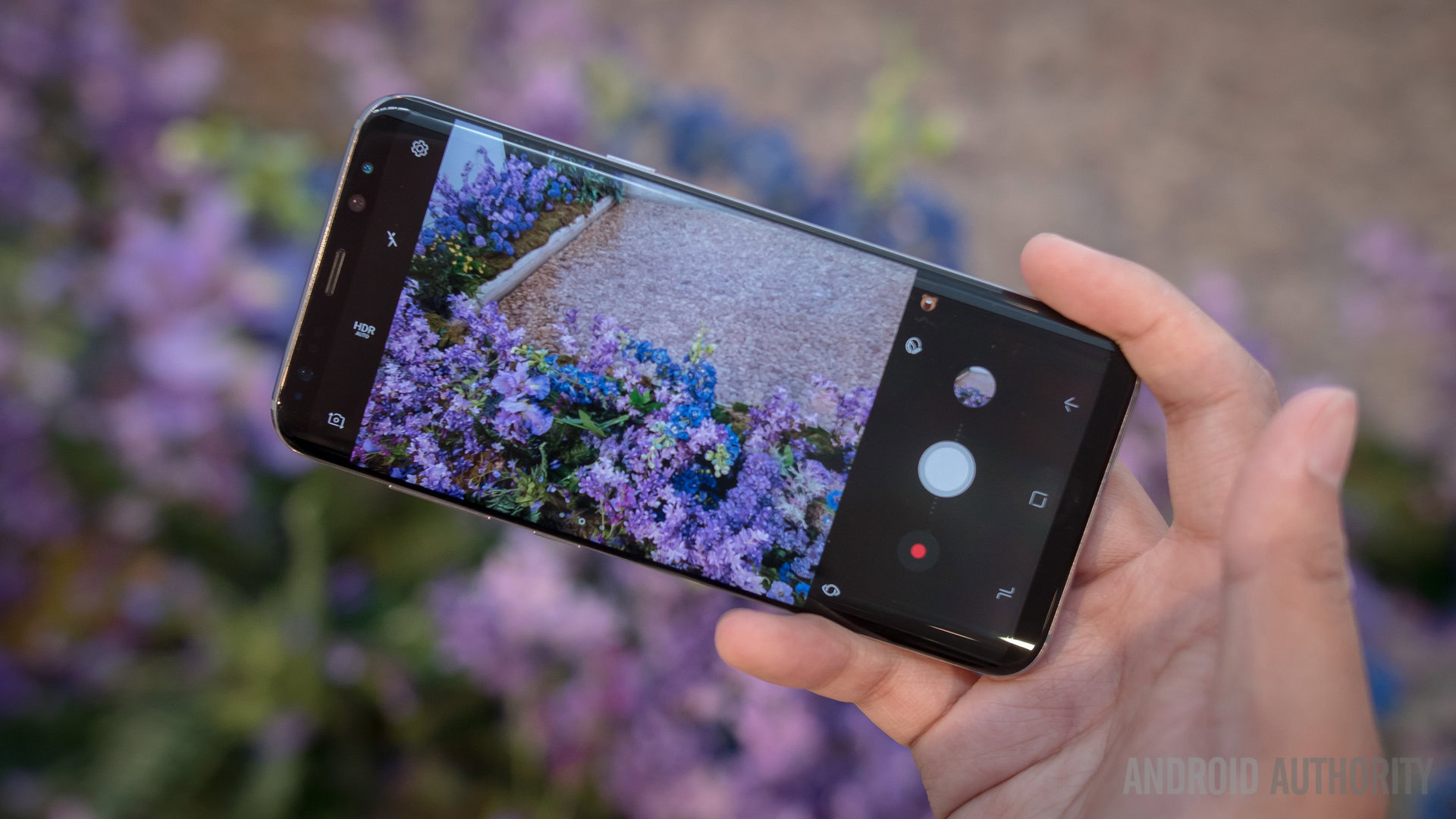
On both the front and the rear cameras, the phones will actually take three pictures at a time and use two of them to sharpen up the final image. We haven’t had a huge chance to check this out quite yet, but needless to say we’re excited to check it out.
Oh, and for those moments when you’re trying to take a photo with one hand, Samsung has included a neat one-handed zoom feature in the camera apps this time around.
Both the Galaxy S8 and S8 Plus are running Android 7.0 Nougat out of the box. We don’t want to complain too much (less than 3% of all devices run Nougat, after all), but it’d have been nice to see these two phones running the latest version of Android, 7.1 Nougat.
Samsung Bixby
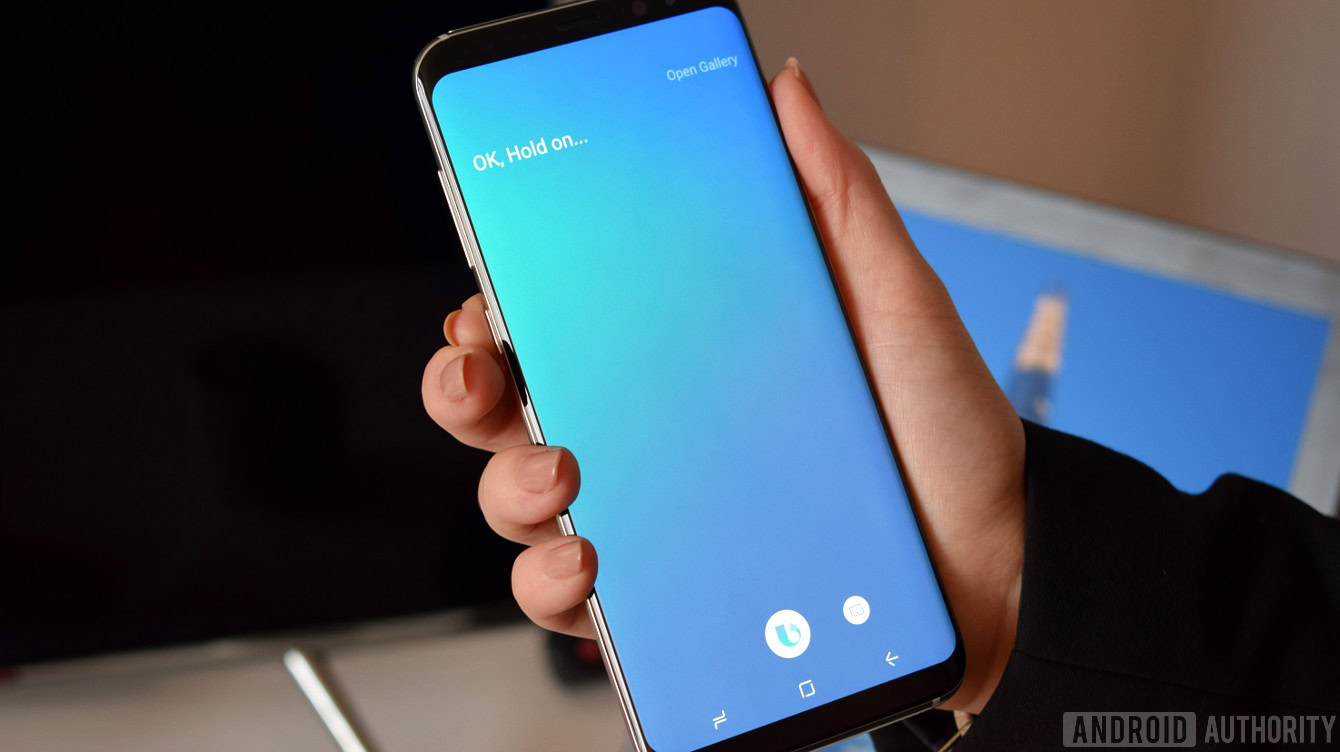
Now, we all know AI and voice assistants are the future. Google Assistant has just made its way to most Android devices out there, the HUAWEI Mate 9 just got its Amazon Alexa update, and Samsung is debuting its own virtual assistant on the Galaxy S8 and S8 Plus called Bixby. Samsung actually announced Bixby over a week ago, claiming that the new assistant would stand out from competing AI-based assistants through three main factors – completeness, context awareness, and cognitive tolerance.
Bixby unfortunately won't be on every S8 handset at launch, though
That all sounds great, but what can it do? Samsung gave us a few examples, which includes being able to recognize images in the camera app, photo gallery, and high-res web photos when using the Samsung browser. Once Bixby recognizes an object, it will offer up contextual information like web and shopping results.
You long press the button for voice recognition and press it once to open up Bixby Home, where you can access Bixby Vision – for identifying objects using the camera – or Samsung SmartThings products like your connected refrigerator. Bixby unfortunately won’t be on every S8 handset at launch, though. The company says it will be available in Korea first, followed by the U.S., then Europe in the latter part of 2017.
Samsung DeX
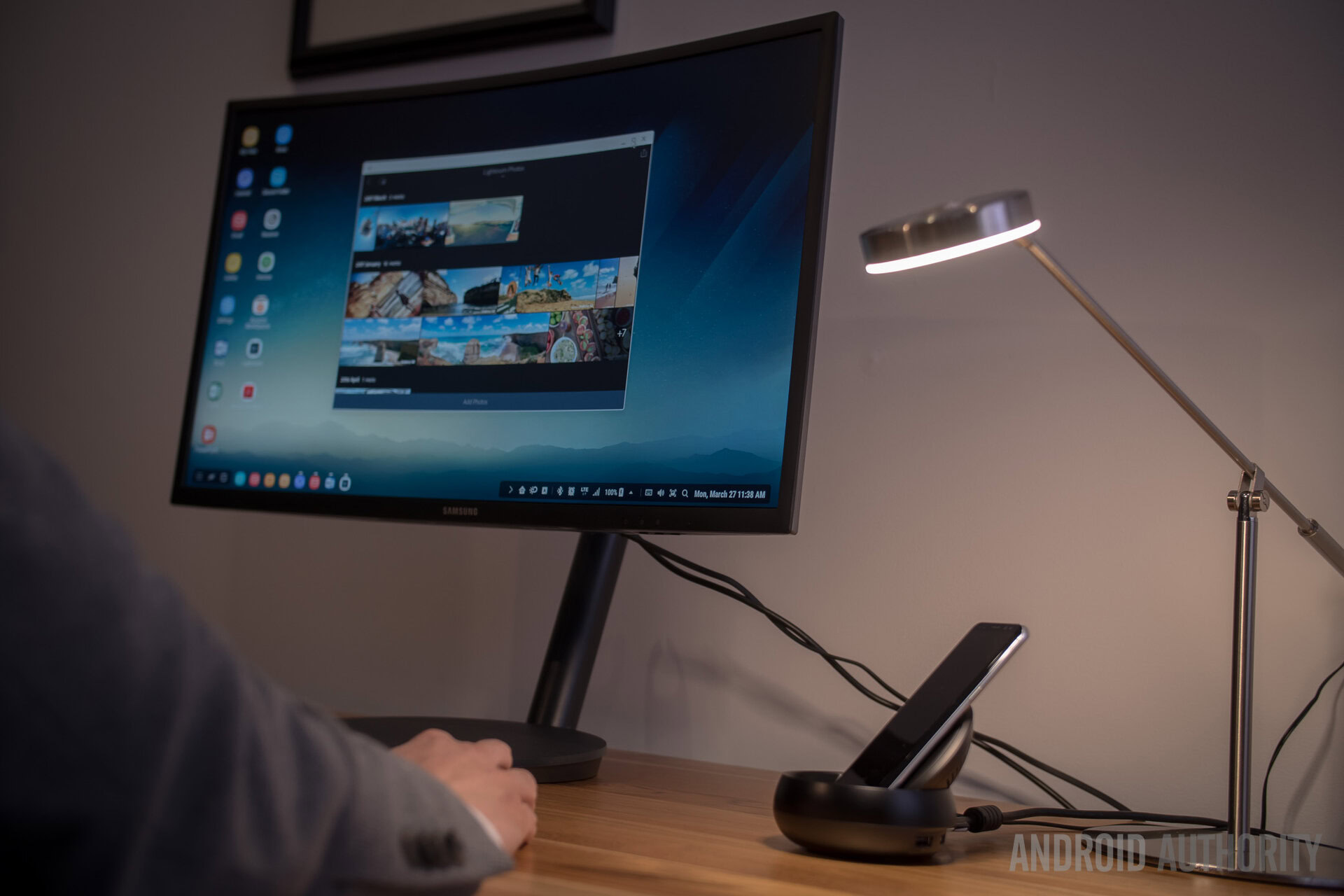
Samsung also announced its own Microsoft Continuum-like solution for the desktop called Samsung DeX. DeX is a docking station that hooks up to a display, and uses the phone’s processing power for a mobile computing experience. You can also hook up a mouse and a keyboard to the dock, allowing you to have a much smoother multitasking experience.
As far as the dock is concerned, it comes with two USB 2.0 ports, one HDMI port, a USB Type-C port, and an integrated cooling fan. You can learn everything you need to know about Samsung DeX by following the link.
New Samsung Gear VR
Samsung is, of course, still focusing heavily on virtual reality. The company has also announced it’s launching a new Gear VR headset with the S8 and S8 Plus, which will also be backwards compatible with the S7, S7 Edge, S6, and S6 Edge. This is the same Gear VR with the gamepad controller that was announced back at CES, but comes in a matching Orchid Gray color.
Samsung Galaxy S8 and S8 Plus pricing and availability
The Galaxy S8 and S8 Plus are slated for a global release on Friday, April 21. Samsung is taking pre-orders for both devices starting Thursday, March 30 in the U.S., with most carriers offering the Galaxy S8 for $750 and the Galaxy S8 Plus for $850.
AT&T, Cricket Wireless, Sprint, Straight Talk Wireless, T-Mobile, UScellular, and Verizon Wireless will carry the Galaxy S8 and Galaxy S8+ in stores beginning April 21. The Galaxy S8 and Galaxy S8+ will be available at all Best Buy stores as well as BestBuy.com, ShopSamsung app, Target and Walmart.
As an added bonus, folks who pre-order one of these new Galaxy phones will also get a new Gear VR, controller and a game pack from Oculus at no extra charge. A limited edition premium bundle which adds a 256GB memory card and Bluetooth headphones by AKG will also be available for $99. Buyers of a new S8 or S8 Plus will also be eligible for Platinum Experience Status with Samsung Rewards.
In the UK, pre-orders open today, March 29, and will run until April 19 on samsung.co/uk – pre-orders will arrive April 20 and general availability will begin on April 28 in both the UK and Europe. The S8 in the UK will cost £689 and the Galaxy S8+ will sell for £779. The UK will only get the Midnight Black and Orchid Gray with the possibility of Arctic Silver at a later date. European pricing will set you back €699/€799.
As more pricing and availability details arise, we’ll keep you updated.
Wow, that was a lot to take in. What are your thoughts? Will the S8 or S8 Plus be your next phone? Be sure to sound off in the comments below!